Promoting Forest Restoration in the Pacific Lowlands of Guatemala
Promoting Forest Restoration in the Pacific Lowlands of Guatemala
Launch of the GLFx South Coast Guatemala Chapter, an initiative of the Private Institute for Research on Climate Change (ICC), the National Forests Institute (INAB) and IUFRO
As part of the celebration for the renewal of the agreement between ICC and INAB for five more years, on Wednesday, 1 June, a reforestation day was held with the South Coast Restoration Network of Guatemala in Santa Lucia Cotzumalguapa, Escuintla. The event offered an ideal setting for presenting the GLFx South Coast Guatemala Chapter.

During the reforestation day 300 trees were planted with a symbolic meaning: to highlight the joint work that ICC and INAB have done since 2011, including the implementation of 590 nurseries, the production of more than 9 million trees, and the creation of the South Coast Restoration Network of Guatemala, in which government actors, private sector, academia, municipalities, NGOs, communities and international partners participate. The event was attended by authorities and members of the ICC, INAB, the Madre Tierra sugar production company, and the Southwest University Center – CUNSUROC of the University of San Carlos of Guatemala – USAC, among others.
Forests and Water
Forests and Water
Science-Policy-Practice Interface for Managing Forest and Water Interactions under a Changing Environment
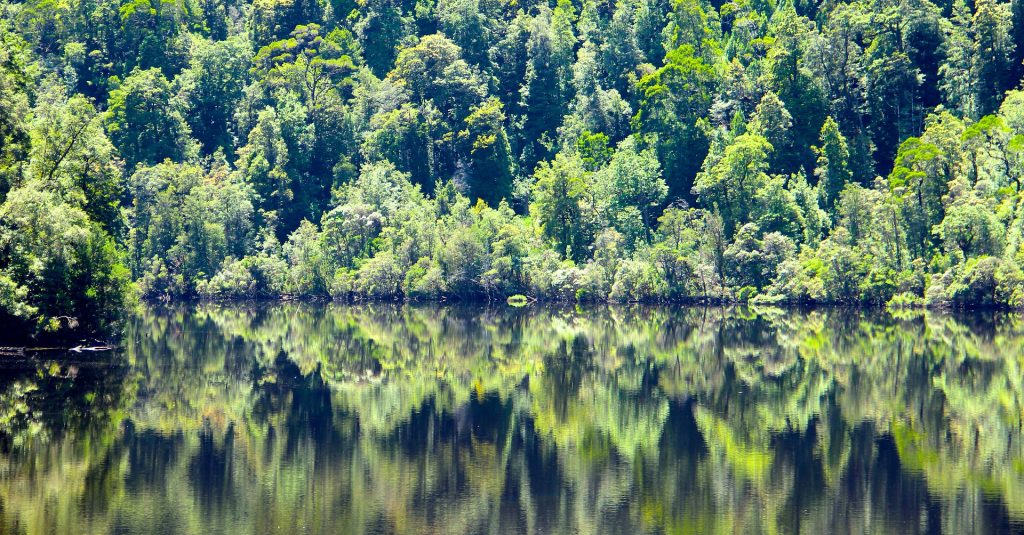
Water is fundamental to life on earth. What may not be quite so obvious is that forests are equally vital resources for life on the planet.
And the two – water and forests – are inseparable in the pursuit of a sustainable and sustainably developed world. Therefore, forests and water resources have been identified as essential elements in adaptation to climate change.
Read more…What are the conditions for large-scale FLR success in Madagascar?
Oui, oui mon ami, we are in Madagascar, the third blog post in our FLR Snapshot series. The fourth biggest island in the world and the house of lemurs. FLR is a hot topic in the Boeny Region, which is dominated by vast flat areas below 400 m in altitude, with volcanic rocks cutting across the long plains along the coast and a dense network of rivers flowing through the landscape. Among the important networks and governance structures in the region, is the FLR committee for the Boeny region, established to connect the many FLR actors and develop a common base for knowledge sharing and capacity development.

Forest restoration means more than planting trees

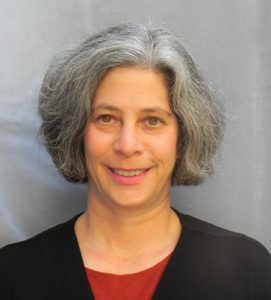 INTERVIEW with keynote speaker Dr. Robin Chazdon,
INTERVIEW with keynote speaker Dr. Robin Chazdon,
University of Connecticut, USA
Keynote Plenary Session 2
Friday, 22 September, 10:30 – 12:00
Rolf Böhme Saal (Konzerthaus Freiburg)
“Restoration Forestry: Challenges and Opportunities for Foresters, Forests, and Landscapes”
Forest Adaptation and Restoration under Global Change – Asian and Oceania Perspectives
Session A-9A (65): Forest Adaptation and Restoration under Global Change – Asian and Oceanian perspectives
27 October 2016, 13:30-15:30; Room 303A
Learn more about the IUFRO Task Force on “Forest Adaptation and Restoration under Global Change”: http://www.iufro.org/science/task-forces/forest-adaptation-restoration/
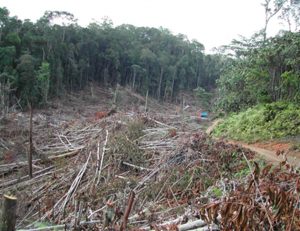 This session, organised by the IUFRO Task Force on “Forest Adaptation and Restoration under Global Change”, discussed various aspects of restoring forest ecosystems under conditions found in the Asia and Oceania regions.
This session, organised by the IUFRO Task Force on “Forest Adaptation and Restoration under Global Change”, discussed various aspects of restoring forest ecosystems under conditions found in the Asia and Oceania regions.
In the first presentation, John Stanturf (US Forest Service) explained the potential benefits that forest landscape restoration can have on mitigating as well as adapting to climate change. These included aspects such as diverse species and structures at stand scale; age classes of tree vegetation at landscape scale and connectivity. Read more…
Forest transition pathways in Asia
Session F-05(60)
Moderator: Wil De Jong
Wednesday, 26 October 2016, 10:30-12:30 (Room 302B)
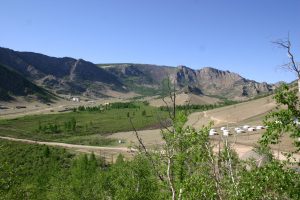
Terelj National Park, Mongolia. Photo: Alexander Buck, IUFRO Headquarters
Studies presented in this session examined the dynamic interrelationship between forest transition and economic, social and political changes, and discussed the implications for forest policy.
As we entered the Anthropocene, human influence became increasingly stronger causing great forest decline, particularly from 1920 onwards. Direct drivers of forest decrease include, among others, population growth and agricultural expansion. Read more…
Research and Development for Sustainable Forest in Asia
Keynote Presentation by Don Koo Lee, Seoul National University, Korea, Tuesday 25 Oct 2016
This most inspiring talk about the important roles of trees, soil and forests for human life highlighted ways of how to achieve sustainable development and showcased success stories, especially the historic achievement of reforesting Korea.
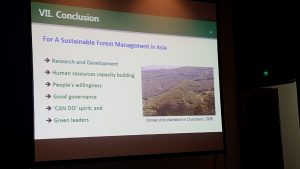
Professor Don Koo Lee speaking about sustainable forest management in Asia. Photo: Gerda Wolfrum, IUFRO Headquarters.
The goods and services provided by forests are manifold and indispensable for people and the environment. Forests are crucial, among other things, for stabilizing soil, providing water resources, supporting biodiversity, protecting against natural hazards, delivering timber and non-timber products, and, quite importantly, combatting climate change. In order to ensure that future generations will be able to enjoy the same benefits from forests, sustainability is indispensable in the management and use of natural resources. Read more…
IUFROLAT III Session Highlights: Forests, Biodiversity and Ecosystem Services
Bosques, Biodiversidad y Servicios Ecosistémicos / Forests, Biodiversity and Ecosystem Services
Session moderator: Bryan Finegan, CATIE, Costa Rica, IUFRO Task Force Coordinator
Thursday, 13 June 2013, 14:00-16:00 (Chirripó)
Find more information on the IUFRO Task Force Forests, Biodiversity and Ecosystem Services:
www.iufro.org/science/task-forces/biodiversity-ecosystem-services/
The session offered insight into functional ecology, with emphasis on climatic conditions along elevation gradients showing that biodiversity decreases with increasing altitude. It also dealt with the provision of ecosystem services in relation with biodiversity. Biodiversity is essential for pest damage resistance, for example. Source dilution, chemical signals and activity of natural enemies are identified as being essential for ensuring low pest damage. With increased source dilution, pests are less likely to establish themselves in a diverse setting. With increased chemical signals associated with diverse flora, pests are less likely to find their favourite source. And with a high number of natural enemies, whose presence is correlated with high biodiversity, pests are less likely to cause damage. Hence, diversification on a stand/landscape level is needed to ensure the provision of forest ecosystem services.
Plant conservation in Southeast Asia was another topic. In Malaysia, for example, efforts to preserve plants have become a prevalent goal for scientists. Diversity is vast, and since 40 – 50 % of the preserved species are endemic, 24% of which are either endangered (EN) or critically endangered (CR), conservation is a central goal. While the pleas of scientists are being heard in some cases, legal frameworks are needed to protect these species.
A presentation on the carbon sequestration potential for complex mosaic forest landscapes in western Mexico aimed at addressing shifting cultivation, framed in the carbon emission discourse. With shifting cultivation, carbon is released to the atmosphere, adding to GHG concentrations. However, the study showed that on a landscape level, there are no net carbon dioxide emissions, as the carbon sequestration rate of forest re-growth compensates for the carbon emission from shifting cultivation.
The presentation entitled “Native forest cover increase: drivers and implications on ecosystem services”, focused on why some areas in the Piracicaba river basin were allowed to reforest. Satellite imagery helped determine deforestation and reforestation from 1990 – 2010. Having preselected variables, the results demonstrate that natural reforestation occurs when slopes exceed 30%, when water proximity is less than 100 m, when annual rainfall exceeds 1400 mm, when elevation is lower than 400 m below sea level or more than 800 m above sea level, and when vicinity to towns is more than 7 km.
The final paper focused on Chakras, forestry systems that are employed by indigenous peoples in the Amazon. Plant composition in Chakras is heterogeneous; they provide multiple sources of food, are biodiverse and function as stores of carbon. The presented study demonstrated that in Chakras, fauna is more diverse, carbon storage is higher in both biomass and necromass than in comparable Cocoa plantations.
Presentations in this session:
Bosques lluviosos tropicales, biodiversidad y servicios ecosistémicos en la era de cambio global; nuevas perspectivas desde la ecología functional (Bryan Finegan, CATIE, Costa Rica)
Forest biodiversity and resistance to pest damage. (Eckehard Brockerhoff, Scion, New Zealand)
Challenges in Developing Practical Plant Conservation Strategy in SE Asia. (Su See Lee, FRIM, Malaysia)
Carbon sequestration potential for complex mosaic forest landscapes in western Mexico. (Lucia Morales Barquero, Bangor University, UK)
Native forest cover increase: drivers and implications on ecosystem services. (Paulo Molin, Laboratorio de Hidrología Florestal, Brazil)
Variación en el almacenamiento de carbono, conservación de la biodiversidad y productividad en dos sistemas productivos, comparados con bosques primarios en la Amazonia ecuatoriana. (Bolier Torres Navarrete, Universidad Estatal Amazónica, Ecuador)
